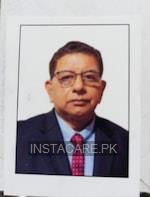Obstructive Sleep Apnea - Symptoms, Risk factors and Treatment
Last Updated On Saturday, December 20, 2025
Obstructive Sleep Apnea in Urdu
Obstructive sleep apnea نیند سے متعلق سانس لینے کا ایک عارضہ ہے جس میں مختصر مدت کے لیے نیند کے دوران سانس لینے میں جزوی یا مکمل طور پر بندش ہوتی ہے۔
سانس لینے میں کمی یا غائب ہونے کے ادوار کو apnea یا apneic episodes کہا جاتا ہے۔ یہ دماغ تک آکسیجن کی کم سطح کا سبب بنتا ہے اور نیند اور زندگی کے معیار کو بہت کم کر سکتا ہے۔
Obstructive sleep apnea ایک سنگین حالت ہے جو نیند کے دوران سانس لینے کو متاثر کرتی ہے۔ نیند کے کم معیار، توجہ مرکوز کرنے میں دشواری، اونچی آواز میں خراٹے لینے کی وجہ سے رشتوں میں دشواری، اور لبیڈو میں کمی کی وجہ سے یہ حالت انسان پر بہت زیادہ اثر انداز ہوتی ہے۔ تاہم، مناسب علاج کے ساتھ، حالت کو منظم کیا جا سکتا ہے، اور اچھے معیار کی نیند کو بحال کیا جا سکتا ہے. اگر آپ اپنے آپ میں یا اپنے نیند کے ساتھی میں رکاوٹ والی نیند کی کمی کی علامات اور علامات محسوس کرتے ہیں، تو اپنے ڈاکٹر سے مشورہ کرنے کا مشورہ دیا جاتا ہے۔
Obstructive Sleep Apnea in English
Obstructive sleep apnea is a sleep-related breathing disorder in which there is partial or complete breathing cessation during sleep for a brief period.
Periods of diminished or absent breathing are known as apnea or apneic episodes. It causes low levels of oxygen to reach the brain and can greatly reduce the quality of sleep and life.
What causes sleep apnea?
Obstructive sleep apnea is caused due to obstruction of the airway. Various factors contribute to airway narrowing during sleep, such as reduced length of the jaw, positioning of the hyoid bone lower than normal, and backward position of the maxilla. In obstructive sleep apnea, the muscle tone of different muscles of the airway and tongue tend to relax, narrowing the airway and causing breathing cessation during sleep.
Symptoms of obstructive sleep apnea:
- Loud snoring
- Restless or unrefreshing sleep
- Daytime sleepiness and drowsiness
- Confusion
- Trouble focusing
- Headache
- Memory problems
- Anxiety
- Depression
- Reduced sex drive
Risk factors for obstructive sleep apnea:
Different factors increase the risk of developing obstructive sleep apnea such as:
- Obesity
- Male gender
- Old age
- Children with large tonsils and adenoids
- Large tongue
- A neck circumference of greater than 17in
- Small mandible
- Cigarette smoking
- Allergic rhinitis
- Asthma
- Family history
- Alcohol use
- Use of sedative drugs
- Acromegaly
- Down syndrome
Diagnosis of obstructive sleep apnea:
Obstructive sleem, the doctor may check for enlarged tonsils, tongue, or any airway narrowing. The inp apnea can be diagnosed by history, physical exam, and different tests. In a physical investigative test used to diagnose obstructive sleep apnea is a polysomnogram. It is considered a gold standard test for diagnosing obstructive sleep apnea.
A polysomnogram, also known as a sleep study, is a test done during sleep. It is a non-invasive, painless test in which different sensors are attached, and different aspects are monitored during sleep such as:
- Eye movements
- Heart rate
- Brain waves
- Blood oxygen levels
- The activity of skeletal muscles
- Respiratory rate
Treatment of obstructive sleep apnea:
There are various treatment options for treating sleep apnea, depending upon the severity. The goal of the treatment is to prevent airway obstruction during sleep. The treatment options include:
Controlling the risk factors:
Patients who have obstructive sleep apnea along with obesity, usually benefit greatly after losing weight. Other than weight loss, managing hypertension, cessation of smoking, alcohol, and sedative drugs can help in the treatment of obstructive sleep apnea.
Sleep apnea mouth guards:
Sleep apnea mouth guards, also known as oral appliances, are worn in the mouth when sleeping. They help in preventing airway obstruction during sleep.
Continuous positive airway pressure (CPAP):
CPAP is a treatment of choice used to treat obstructive sleep apnea. A face mask is worn during sleep and involves continuous delivery of positive airflow through the airways, which helps in keeping the airways open and prevents apneic episodes.
Surgery:
Surgical intervention may be needed to treat any anatomical factors such as enlarged tonsils or adenoids, or obstruction due to other causes. Extra pharyngeal tissue can also be removed by surgery.
Hypoglossal nerve stimulation:
This is a noninvasive treatment used to stimulate the hypoglossal nerve to increase the muscle tone of the tongue and prevent it from collapsing and airway narrowing.
Tracheostomy:
Tracheostomy is a treatment used as a last resort for treating severe obstructive sleep apnea.
Conclusion:
Obstructive sleep apnea is a serious condition that affects breathing during sleep. This condition can have a great effect on a person due to low quality of sleep, trouble concentrating, problems with relationships due to loud snoring, and decreased libido. However, with proper treatment, the condition can be managed, and good quality sleep can be restored. If you notice any signs and symptoms of obstructive sleep apnea in yourself or your sleep partner, it is advisable to consult your doctor.





